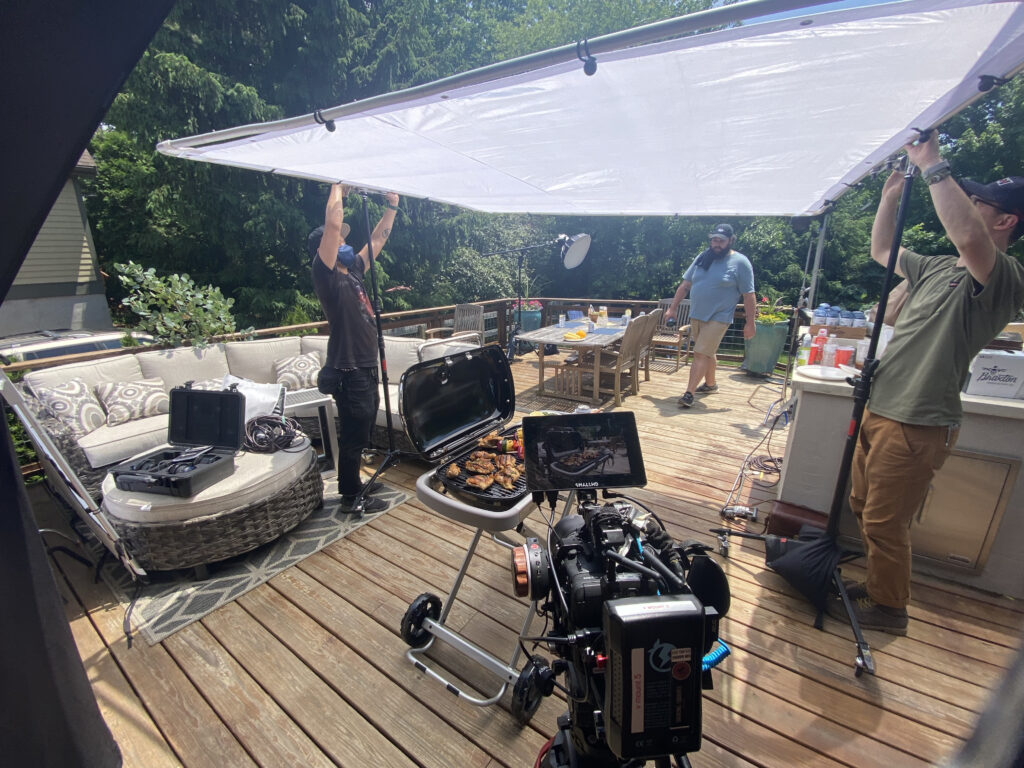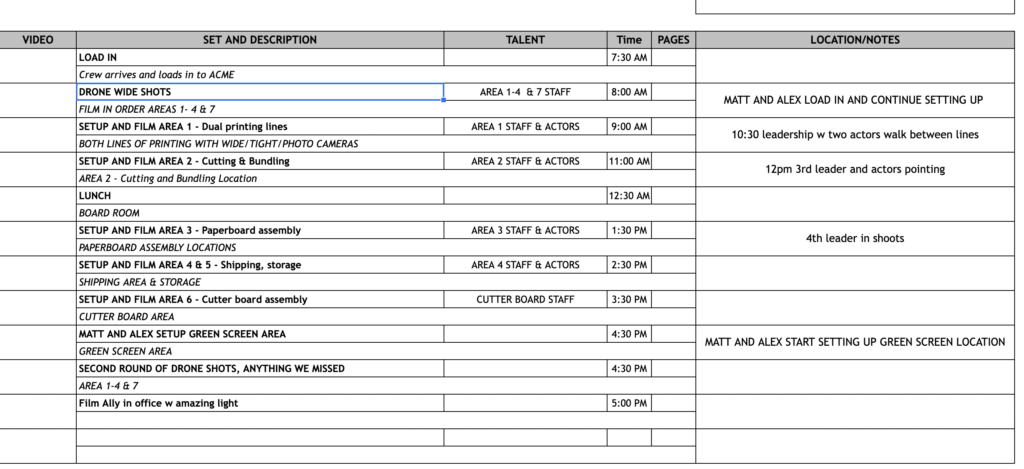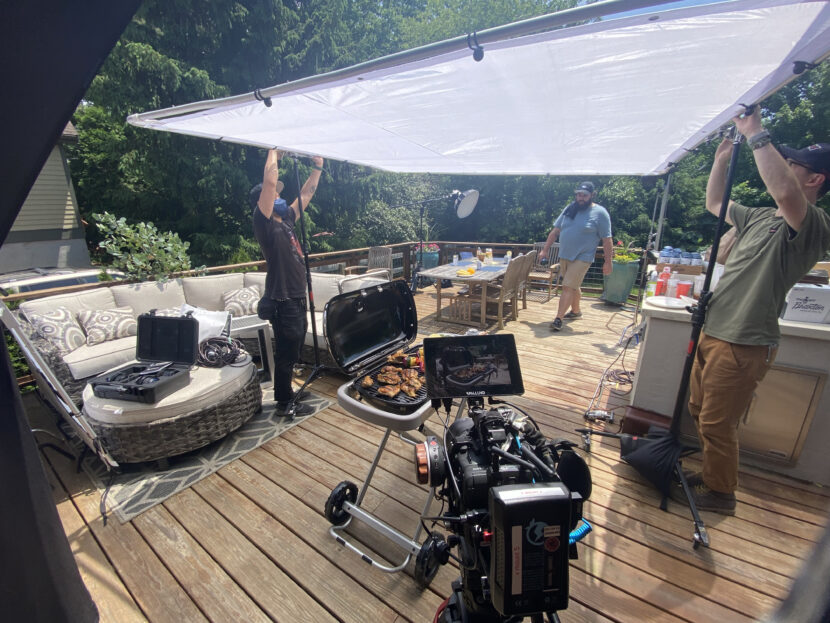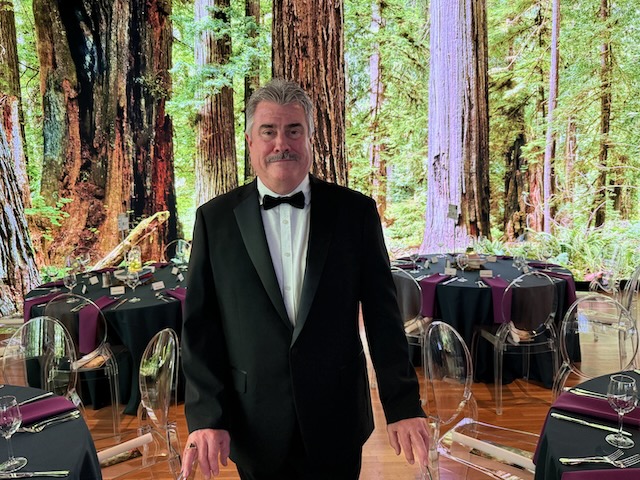Pricing for corporate videos is derived from the four areas of production: Discovery, Pre-production, Production and Post-production. In this article I will explain what each process involves, how to estimate costs and how to scale production to fit into your company’s budget.

DISCOVERY
In order to produce a video that will accomplish your goals, a marketing, branding or film production company will first need to know who you are, what you do, how you make a difference and why you do what you do. Secondly, they will want to understand who your clients are, what they want, what problems prevent them from getting it and how your client can help them overcome their obstacle and make them more successful.
The producer of a reputable video production company will meet with your client’s leadership team several times to learn all about the company and its customers. Additionally, the producer will likely want to conduct one-on-one interviews with employees at various levels to get to know the culture of the company. These interviews will also unearth compelling stories within the business that will give voice and emotion to your story.
All of this information will be put into a brand report that summarizes the findings of the discovery process and will work with your leadership to refine the document. This will inform everything that happens in the video production process, from scripting and storyboarding, to filming and editing.
The cost for this process really depends upon how well a company understands itself and their clients. Larger corporations usually have a very refined brand and may only need to use the discovery process to inform the video producer of its goals in video. Smaller companies may need more help in understanding who they are and what their customers need. Therefore, the process and cost may be more significant. The costs may range from $2,500 to $10,000 depending upon these factors.
PREPRODUCTION
Preproduction traditionally is made up of the following processes: creative, scripting, site scouting, storyboarding, daily video schedules, casting and project management. The brand report will be given to a creative who will develop a concept for the video that is not only informative but creative and entertaining. Then a script writer will turn your information into a compelling story that is engaging and emotional. Yes, I said emotional. All great salespersons know that people buy on emotion and use information to support their decision.
Site Scouting
Site scouting is crucial to the success of your video. The producer/director and the director of photography need to either find the best places in your company to film your story or they need to find location(s) to film it. Once they find the best locations, then they will determine camera angles, lighting, blocking and camera movement. Many photos of the best locations will be taken to guide them in their filming plans.

If your video is based more on a creative concept than a story, then it will likely need to be filmed in a studio and that may require set design. This approach will be more expensive and require larger crews but will likely have a greater commercial impact for media buys.
A video based upon what your company does, let’s say manufacturing for example, will likely be filmed in your facility to showcase your people, processes and technology. Depending on the size of your facility, site scouting may require anywhere from a half day to several days.
Finally, videos that are based upon the traditional story arch, one that tells the story of an individual, will require site scouting as well. If for example, your company tells the story of how you changed a person’s life, then the video team will need to determine the locations where this person’s story takes place.
Site scouting is absolutely critical to the success of your film. If what is filmed doesn’t look pleasing to the eye, then people will not watch it, no matter how good the concept, information and story is. People will decide in the early seconds of a video whether or not to continue watching. Great directors and DP’s have an eye for quickly sizing up what will look great on camera.
Storyboards
Once filming locations have been chosen, the next step is creating a storyboard. Storyboards used to involve a graphic artist drawing pictures of what each scene would look like. This would help you the client visualize what the film will look and feel like. It also gives the production team clear information to make filming decisions such as how to direct talent, light the scene, camera angles and movement, talent blocking and the needed equipment require. For example, it reveals such needs as tracks for cameras on dollies and jibs to raise and lower the camera, to name a few.
However, on smaller scale filming projects, hiring a graphic artist might be too cost prohibitive and unnecessary. A cheaper way to storyboard might be accomplished by the DP taking pictures during the site scouting and posing people in the picture to demonstrate camera angles, lighting, equipment. These pics are placed into a table alongside each sentence of the script to demonstrate how the text is brought to life through b-roll visuals.

A storyboard will have one or more pictures to show what will be show in the film while a script is delivered, whether through on-camera talent or a voice-over narration. Storyboards are important to both the marketing and brand managers of the company and to the video production team. It helps everyone envision and understand what the video will look like before the expensive filming days.
For you the company, it’s important because you have input and can requests changes before a production team shows up to film. Once it is filmed, the look is baked in and there is less that can be done to change the look.
Production Schedules
Production schedules ensure that the production team is organized so that they can film as much as possible each day. The director and DP determine where, what and who to film hour by hour so that no time is wasted and so that the production team knows what is expected of them every hour. Production schedules will include arrival times for crew, setup time, travel time from location to location and how long each scene will take to film. Experienced directors and DP’s will run a tight schedule and know how long it takes to film the scene.

Casting
Casting may involve choosing professional talent in collaboration with you the client or it may involve helping you find the best employees to interview and film doing their jobs. Just because someone has an important job at your company does not mean they will be best on camera. The discovery process will give producers and directors great insight into who looks good and speaks well on camera. They will have strong recommendations to help you get the right people on camera. In the end, what matters is that everything and everyone is engaging and persuasive in your video. The casting process is how this is guaranteed.
Project Management
There are many moving pieces in video production, and it is the role of the producer to make sure everyone and everything is prepared and scheduled for the days of filming. Don’t underestimate the importance of this job. Without it, much expensive time will be wasted on filming days, which in the end will affect your budget and the quality of your video.
PRODUCTION
Production days are what all the discovery and preproduction make possible. What determines cost for production days are three things: crew size, days of filming and equipment. The size of the crew depends upon what is being filmed.

Basic Production Crew
Filming interviews may only require a director, a DP (Camera op), audio technician, grip (moves and sets up equipment), gaffer (in charge of lighting) and hair and makeup.
Assistant Camera
If the camera is in motion, he or she will likely have the camera on a steady-cam or in a supported gimbal system. This will require an assistant camera who provides support to the DP by changing and cleaning lenses, swapping out SSD’s, changing and charging batteries and making sure the DP can keep filming without interruptions. Though this position adds expense, it saves time and money in the end. If the DP has to stop filming in order get and swap out an SSD or battery or lens, that is time he is not filming and being productive.
Art Director
If the background needs help being dressed up, you will need an art director. This person comes with many colorful props such as flowers, vases, books, lamps and much more to make what is in the background look visually appealing and authentic to the film. An art director has an amazing eye for visual detail and will work closely with the director or assistant director to ensure that the video is colorful and beautiful.
Assistant Director
On larger productions, the director needs to focus on a higher artist level and needs an assistant to communicate his or her wishes to the crew. The AD understands the director’s vision and manages many details and crew members on his behalf. This is a critically important role on the more creative concept films, commercials and narrative stories. Yes, it is an added expense, but when there is a larger production crew on set, the AD also saves much time and money.
On a movie set, there can be as many as two hundred crew members on set. But for most corporate videos, crew size tends to range from 4-15 people on set.
Drone Operator
These days a skillful drone operator can accomplish what used to require helicopters and enormous cranes, which were very expensive. Today a drone operator and a spotter can film stunning visuals from amazing heights and perspectives that bring dynamic movement and accessibility to a video that couldn’t be filmed any other way. Drones can be used outside and inside (if the facility is large).
Most drone pilots charge based on how many batteries are required. The average drone battery lasts about 20 minutes. If you want the pilot to film all day, if will require a lot of batteries combined with recharging time. Often, for a corporate video, a half day will suffice.
Don’t underestimate the wow factor drone footage can bring to your corporate video!
SCALING VIDEO PRODUCTION TO YOUR BUDGET
As the saying goes, you get what you pay for. However, there are ways you can scale the price down to your budget. If you are willing to limit the scope of your project, it can be done with a smaller crew and fewer film days. If camera motion is required, a camera that is on a dolly and moves on tracks will cost significantly more. It takes more grips to lay down the track and move the dolly in addition to an AC and most likely an AD.
If the motion can be filmed with a steady cam or gimbal system, one grip, a DP and an AC may suffice for camera motion. When the camera is on a tripod, an AC may not be needed at all. If the script is delivered exclusively through a voice-over narration which is done in post-production, you will not need an audio technician on set, thus reducing expense.

POST-PRODUCTION
Video Editing
Post-production is where your film is put together by a video editor. Costs come from how many days it takes to edit your video to your satisfaction. The more days filming, the longer it takes to edit your film.
Audio Editing
Secondly, but equally important is audio editing. Here is where the sound is sweetened, EQ’d, compressed and mastered. No matter how beautiful the film looks, it rises and falls on audio. Your audience will stop your video quickly if sound is bad.
Color Grading
Higher end DP’s will film in log which looks greyer on the camera monitor and the color looks desaturate. However, log stores much more detail and a colorist has much more data to work with. A colorist is a master of creating the mood of the film, whether inspiring or somber. They have the ability to make your film bright and colorful or dark and contrasty. Colorist also make sure that the audience looks at what is important and de-emphasizes what is not important. Colorists are not cheap, but they are the difference between what looks like a basic video or a higher end film.
Graphics and Animation
Most brand films and corporate videos need text to appear on screen in creative ways. You may need to reinforce certain information as the video progresses. An animator will make the text move in and out of screen in visually stimulating ways. A graphic artist will create assets such as logos, charts and characters that reinforce the messages you wish to convey as the video is watched. In some cases, such as in manufacturing, the only way to show a process is through 3D animation. The camera may not be able to film inside a machine and the only way to show it is through 3D animation. In some cases, a particular machine has yet to be built but can be demonstrated through animation.
Voice Over Narration
In some videos, the script is read by a voice over artist. Most often this is recorded in the VO artist’s own studio and then sent to the editor. When your video is driven by voice over, you will want your editor to provide you with samples of a number of voice-over artists reading a small portion of the script. This is how you will audition the artists and decide whose voice fits with your brand. Usually, VO artists will provide this sample at no charge to you, hoping to win your business.
SCALING POST-PRODUCTION TO YOUR BUDGET
A good rule of thumb for determining the number of edit days required has to do with the number of production days involved, the length of the script and in some case the length of the film. For most corporate videos, a minimum of 5-10 video editing days is required. The longer the script, the more time it takes to edit audio as well. Color grading can be very time consuming and the price will reflect that. Graphics and animation depend upon how many assets have to be created and how complicated the animation is. A basic brand video may only need a small amount of audio editing, color grading and animation.
At the conclusion of the discovery process, most video production companies will work with you to set a budget to accomplish your goals. If you find that your video dreams are more than you can afford, a producer can help you scale the project to fit within your budget. Before you sign the contract for production, you will know how much the project will cost and what contingencies could change the cost.
A Final Note
The length of a video is not always the way to determine cost. Some 30 second commercials require a significant crew, multiple locations and studios, numerous filming days, set design and travel. And some videos can be filmed with a small crew in a few days and only one or two locations. Cost comes down to the size and ambition of your video and what it takes to accomplish it successfully.
I hope this was helpful. If you ever need help in determining how to accomplish your corporate video goals, we would love to talk. Please reach out to us on our contact page and schedule a free appointment. We love and are highly skilled in scaling projects to our client’s budget.
Dr. David K. Bray
President/Producer, Barking Squirrel Media, LLC


